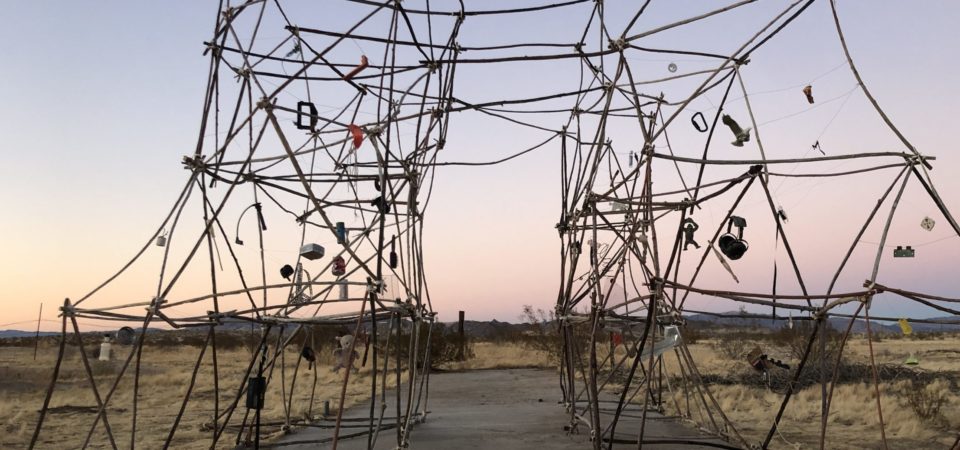During my second art residency at Desert Dairy in the Mojave desert, I created “Our House”, a site-specific temporary installation about fragility and resources, made only of materials and objects I found on the property. I spent two weeks in a place where I feel at home and entirely free to experiment and create. Desert Dairy is a property in Twentynine Palms situated near Joshua National Park’s East Entrance and accessible through a short unpaved road. The landscape is arid. Nature is harsh there. Life in this ecosystem is fragile.
A year ago, on the same property, I created “Exponential”, a site-specific installation that addresses the infernal circle of “Extraction-fabrication-pollution” on which our civilization is based. The exponential factor is recent in human history. It is due to the intensification of a consumption-based economy. Many human activities took-off and sharply accelerated towards the end of the 20th century. The last 60 years have, without a doubt, seen the most profound transformation of the human relationship with the natural world in the history of humankind.
Between my art residencies, the covid19 pandemic happened, showing the world how a tiny virus can jeopardize the balance of our very complex society on a planetary scale. Everywhere there is an intense desire for meaning. People are stressed and disenchanted. Extracting ourselves from the craziness of the consumerist world around us is extremely difficult. We need to recognize what makes us happy, what brings us joy. For me, it is spending time doing what I love, with people I care for, surrounded by nature.

